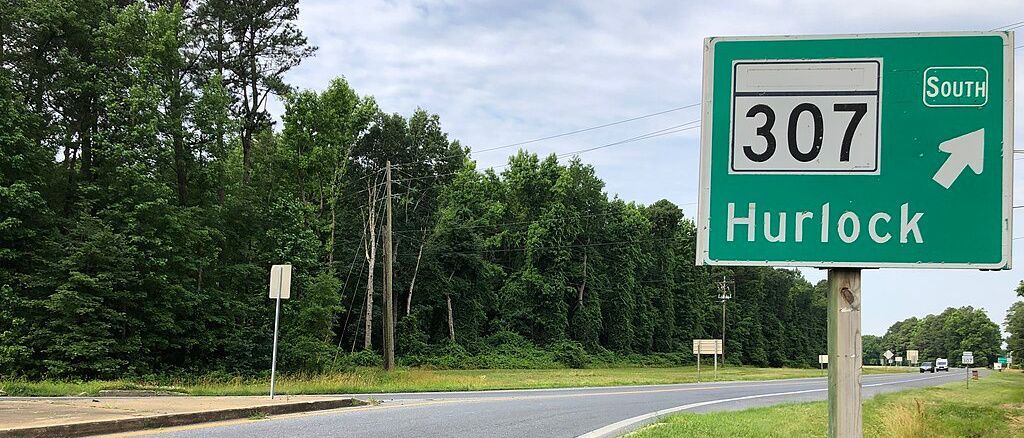My Old School — and Yours

Kent County Middle School on East Campus Ave. in Chestertown is over 70 years old, and like many schools built shortly after World War II, may have reached the end of its days. At two Kent County Board of Education meetings on June 20 and 28, the public was informed of tentative plans for the future of the building and from all signs, the old school looks as if it’s come to the end of its life.
Built in 1950 as Chestertown High School for the Baby Boomer generation, the building is a classic example of that era’s school architecture. In its heyday, it was the largest of Kent County’s six high schools, though with only 59 graduates in the class of 1959, that’s not saying a lot. By the early 1970s, the county recognized the benefits of a consolidated high school and the local high schools were combined into one large school centrally located in Worton. The old building in Chestertown was converted to the county’s middle school, serving grades 5 to 8, a role it has now served twice as long as its days as a high school.
Clearly the old building has numerous problems. Not only does it fail to meet modern building codes and ADA requirements, its structural problems include a leaking roof, deteriorating brickwork, lack of windows in many classrooms, and inefficient energy systems. Several classrooms can be accessed only from the library. And other elements of the building show the wear-and-tear expected for any building its age, let alone one exposed to the energies of several hundred school-age children every day for seven decades.
Representing architectural consulting firm Crabtree, Rohrbaugh & Associates, Larry Levato and Grace Heiland presented four proposals.
The first option — renovating the existing building — would leave many problems unsolved, including the absence of windows and poor layout. This option would also require relocating the students while construction is under way. This would be the least expensive choice.
The second option would be to build a new middle school on the current site’s playing fields. The third and fourth options would be to build a new school next to, or as an addition to, the Kent County High School in Worton. In these plans, the middle school would share some facilities, such as the playing fields and cafeteria, with the high school.
A fifth choice — building on a new site — was abandoned because no suitable property is available. In all but the first option, the old building would be demolished once the new school was built.
At the June 20 meeting, school board member Trish McGee cited the fate of the former school at 215 Washington Ave. as an example of the complications of de-acquisitioning a school property, which would be needed if the middle school moves to Worton. Built in 1915 as Chestertown High School and later used as the headquarters for the Board of Education, the property fell into disrepair and was replaced by a facility in Rock Hall. After sitting empty for several years, this prime property was ultimately acquired by Washington College for a bargain price in 2012. After its demolition, the college replaced it with a modern classroom building.
At the same meeting, Chestertown Mayor David Foster and Councilmember Meghan Efland, in whose ward the school is located, said they would like to see the school stay in Chestertown. They also promised to support whatever decision the school board reaches.
And what would all this cost? The consultant’s estimates ranged from $49.8 million (to renovate the existing building) to $55.8 million for a new school at the Chestertown site. Superintendent Karen Couch said that normally the state and county split the cost of new school construction 50-50, but that counties can often negotiate a better split.
To put that in context, the 2023 Board of Education’s budget is $31 million. That includes $13 million in federal and state funds. The remainder — some $18 million — is about 30% of Kent County’s total projected budget of $58 million for fiscal 2023. In other words, the middle school project represents a major investment for Kent, which is by population the smallest county in Maryland and by no means the richest.
At this point, the school board is taking public input to help it decide the best alternative. It expects to bring the project before the county commissioners in August.
Kent County is not the only district in Maryland that’s facing a major school construction project. A 2022 study by the Maryland Association of Counties found a large number of public schools classified as “functions unreliable.” Of those, 33 are on the Eastern Shore, with Wicomico (11 of 24 schools), Cecil (7 of 31) and Worcester (7 of 14) having the most facilities in this category. Another 63 Shore schools (out of 133 total) are classified as “needs repairs.” All this will cost money, most of which will need to come from state and local taxes.
There are no easy answers to the questions raised by the condition of our schools. Nobody wants children in unsafe, deteriorating, or poorly designed school buildings. Yet few people wish to contemplate higher taxes. But the best solution to problems such as the Kent County Middle School isn’t always the cheapest. In fact, judging by the reactions of residents at the June 20 meeting, building a new school on another part of the current property appeared to draw the most favorable responses — even though it would cost the most.
Whatever county you live in, the equivalent of Kent County’s Middle School project is likely to be coming your way, if it hasn’t already arrived. Another reason to pay attention to what your local school board is doing, and to make your opinion known to those who’ll be making the decisions, is because you’ll be paying the bills and sending your community’s kids to the resulting schools.
Peter Heck is a Chestertown-based writer and editor, who spent 10 years at the Kent County News and three more with the Chestertown Spy. He is the author of 10 novels and co-author of four plays, a book reviewer for Asimov’s and Kirkus Reviews, and an incorrigible guitarist.
Common Sense for the Eastern Shore







